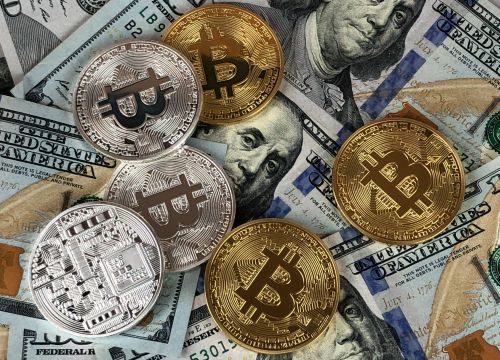

Technology continues to change the way people handle money, and digital currencies have emerged as an alternative to traditional financial systems. Among them, one stands out due to its widespread use and increasing acceptance. This electronic asset operates independently of banks and governments, giving individuals greater control over their wealth.
A basic understanding of what is bitcoin allows people to see why it has gained popularity in recent years. This digital medium offers fast transactions, lower fees, and protection from inflation. As more people look for alternative ways to manage their savings, this financial tool has become a subject of interest. This article explores its functionality, advantages, and how it could influence financial stability in the future.
Understanding the Basics of Bitcoin
Bitcoin is a decentralized digital currency that allows peer-to-peer transactions without the need for banks or intermediaries. Unlike traditional money issued by governments, it operates on a blockchain—a transparent and secure ledger that records all transactions. This system ensures that no single authority controls it, making it resistant to censorship and fraud. With a fixed supply of 21 million coins, scarcity plays a key role in its value.
This digital asset is used for payments, investments, and wealth storage, offering an alternative to traditional financial systems. Transactions are verified through a process called mining, where computers solve complex mathematical problems to secure the network. Bitcoin’s borderless nature and low transaction costs make it a popular choice for global payments, financial independence, and protecting wealth from inflation.
How Transactions Work
Unlike bank transfers, which require approval from financial institutions, these digital transactions are processed directly between users. Each exchange involves a unique digital signature, ensuring the authenticity of the transfer. This method eliminates delays and additional processing costs.
Miners play a key role in verifying transactions by solving complex mathematical problems. Once approved, a transaction is added to the blockchain and cannot be changed. This process ensures efficiency while maintaining security across the network.
How Bitcoin Compares to Traditional Money
Unlike conventional currencies issued by central banks, this digital asset has a fixed supply. This prevents inflation caused by excessive printing of money. Over time, this scarcity could enhance its value, making it a potential long-term store of wealth. This limited supply model contrasts with traditional currencies, which can be devalued through excessive monetary policies.
Another key difference is its borderless nature. International transactions using traditional systems often involve high fees and delays, while digital transfers occur within minutes. This feature makes it an attractive option for global payments. As more people seek efficient cross-border transactions, this alternative is becoming a preferred choice for international trade.
The Impact on Business and E-Commerce
Many businesses have started accepting this alternative form of payment, recognizing its benefits. Faster transactions and reduced processing fees make it appealing for online stores and service providers. This adoption also allows merchants to reach international customers without relying on costly banking services.
Accepting digital payments can also enhance brand reputation, positioning businesses as forward-thinking and innovative. Additionally, blockchain technology provides increased transparency, reducing the risk of fraud. Businesses that integrate digital payments can offer secure and efficient services while staying ahead in a rapidly changing financial landscape.
How It Can Strengthen Financial Independence
One of the main reasons people turn to this currency is its ability to provide financial freedom. Traditional banks impose limits on transactions and charge high fees, whereas this alternative allows individuals to manage their wealth independently. For people living in countries with unstable economies, this digital asset serves as a hedge against inflation.
Because its supply is fixed, it retains value over time, and doesn’t lose purchasing power due to excessive printing. This scarcity-driven model makes it an attractive option for long-term investors seeking stability in uncertain economic conditions. It also allows people to store wealth in a decentralized system, protecting them from potential government restrictions on financial activities.
Future Growth and Mainstream Adoption
The increasing acceptance of digital currencies suggests that they will play a larger role in financial systems. More businesses are starting to accept this form of payment, and financial institutions are exploring ways to integrate blockchain technology into their operations.
Governments and regulatory bodies are also considering frameworks to manage its use, which could lead to wider adoption. As technology advances, the potential for seamless integration with everyday transactions continues to grow.
Knowing what is Bitcoin is essential to stay parallel with the financial upgrades. This digital asset has changed the way people view money by offering speed, security, and independence. While risks exist, the potential benefits make it an attractive option for those looking to diversify their future financial strategies. Whether as an investment or a payment method, its influence on financial systems is undeniable.


